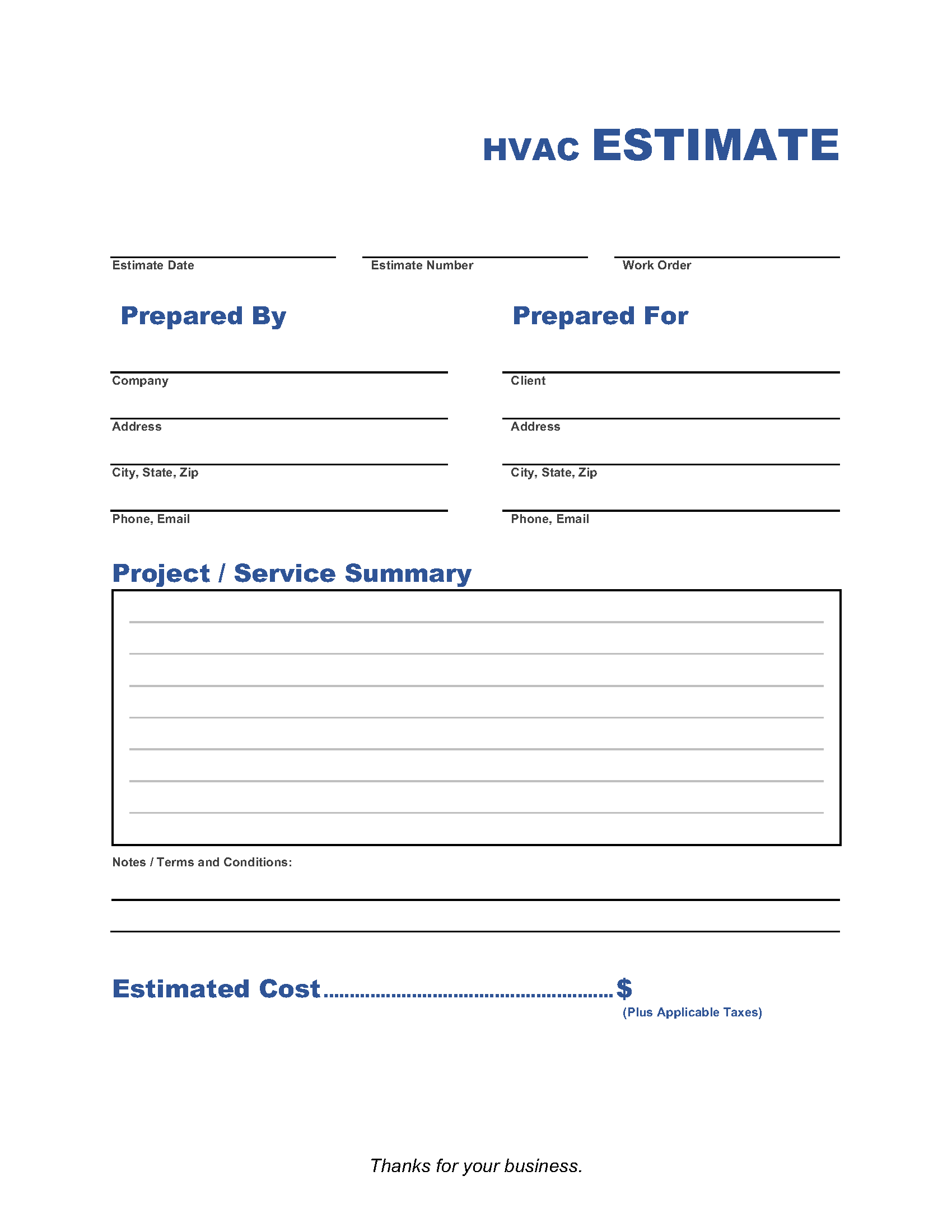Most Common HVAC Calls
- Air filter issues
- Malfunctioning thermostat
- Blown fuse
- HVAC maintenance
- Dirty evaporator and condenser coils
- Refrigerant leak
How Long Does an Average HVAC System Last?
The average HVAC system can last anywhere from 10 to 20 years, or even longer. Factors that influence the lifespan of an HVAC system include location and climate, as well as whether maintenance is regularly performed. It’s recommended that HVAC systems get a tune-up at least once a year and probably twice, so neglecting this maintenance can take years off the system’s life.
Average Cost of Replacing an HVAC System
Replacing an HVAC system can cost anywhere from $3,200 to $12,500. The average cost in the U.S. is $7,870.
How to Create an HVAC Estimate
Think about the number of hours the job will take, your hourly rate, the materials required, and your overhead — all the expenses you pay in order to keep your business running, ranging from insurance to uniforms to a vehicle lease. Creating an estimate can be tricky; in fact, there’s an entire profession known as HVAC estimator. These are people who plan and cost out large HVAC projects. Even HVAC estimators sometimes get their estimates wrong, so don’t worry if yours changes a bit as the project progresses. The most important way to mitigate a customer’s disappointment is to communicate as and when changes occur.
Average Hourly Wage & Salary
According to the Bureau of Labor and Statistics, the mean hourly wage for an HVAC technician is $26.29 and the mean annual wage is $54,690.
4 Tricks for Good HVAC Estimators
- Make sure an estimate is easy to understand and easy to sign off on. By clearly explaining what goes into a job and the components of a system, a contractor is likelier to gain a customer’s trust. Most people who own homes don’t know the first thing about HVAC systems and how they actually work, so they appreciate you taking the time to break it down.
- Include tiers of pricing: the cheapest solution, the middle ground, and the most expensive solution.
- Include photos in your estimate.
- Use a digital estimating tool so that it’s easy for a customer to approve the estimate with the click of a button.
